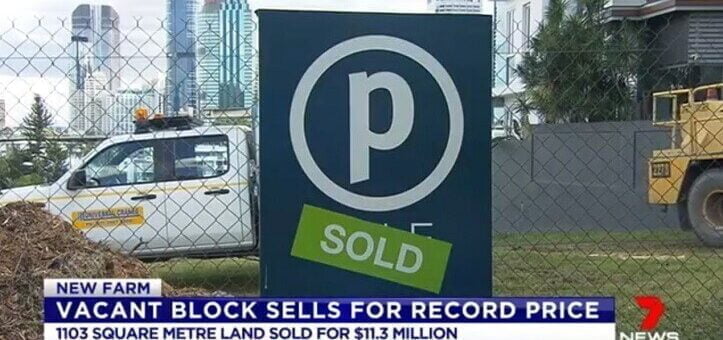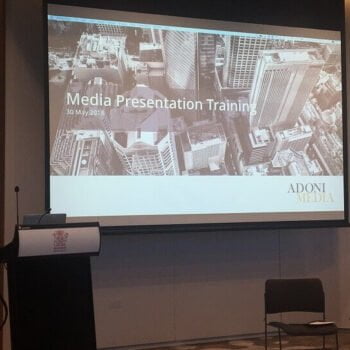
Why does your business need a media kit?
A media kit, also known as a press kit, can either be a page on your website, a printed-out folder or an email attachment that contains resources and information about your organisation, event or product which journalists can use.
These media kits are mainly sent to journalists or newsroom Chiefs of Staff. They help them write stories and to quickly learn about the essential facts of your organisation. The kits also provide a one-stop-shop where journalists and editors can access photos, videos, and marketing materials.
When you want to network or reach out to the press, a media kit is an essential tool to refer to and share. Journalists are usually more willing to cover the story if you’ve done some of the work up front (remember they’re incredibly time poor) and you and your organisation come across as incredibly professional and media-ready.
How and where do you send out or publish media kits?
A media kit accompanies a media release, so the same rules apply – research which newsroom you think would be a good fit for your story. This is crucial, you don’t want to send it where it will be ignored by journalists.
In the age of the internet, digital media kits are becoming more common and if you have decided to publish your media (releases, grabs, photos, video, etc.) on your website, it can easily be accessed by journalists.
Create an easily found webpage that is linked to the footer of your main website either called “Media”, “Media Kit” or “Press Kit”. It’s best not to put it in your main navigation though.
Media kits can also be given to journalists on a USB at events or meet-ups, so they can access larger files that may not be able to be downloaded from a webpage or email.
The best way to give out a media kit, though, is to send it via email.
Write a brief statement in the body of the email with a short sentence (no more than 10 words long) to identify what your media kit includes and why you’re sending it out.
Ideally, make sure the email with the media kit is personalised and tailored for each media organisation, rather than sending the same media kit to numerous journalists.
Sending media kits to regional newsrooms means your story can have a wider reach. If you send grabs or video, regional newsrooms can run the story, without having to send a cameraman or getting vision sent from another location.
What do media kits contain?
The list of what needs to be included in a media kit may change depending on the reason why your organisation is using it and the resources you have available.
However, there are a few essentials that every media kit should have, as well as a few that your organisation would benefit from.
The media kit essentials:
- Contact details: The most important thing is to include who you are, your organisation’s spokesperson or anyone else who is relevant to the story.
- Information about the organisation: You can also include vital people on your team, like the executives and share their story. In this part, you’ll want to include you team members’ bios.
- Media releases: Media releases are the best way to tell a journalist the details of your story, event or product, including any new announcements or organisational updates. A media release should include quotes from the person you want to be interviewed.
- Video news releases: Video News Releases (VNRs) are essential for any media kit. While they may require some upfront costs in the form of a camera operator/editor, they are a wonderful tool which allow for your story to reach further, and for you to control the grabs and vision that make up the story. VNRs aren’t necessarily designed to be aired as is, so don’t over edit the footage – just supply a wide range of different shots that journalists can use. VNRs should not be more than 5 minutes long.
- Photos: Like a VNR, photos are important, so that journalists can use these for their stories. The higher resolution, the better. This means the photo could be used for any media platform, including television. If you can’t fit the hi-res pictures in your media kit, let the journalist know you have those photos available and send low-res photos instead. Make sure the photos are relevant to the story or else they will be disregarded.
Some other options that you can include in your media kit:
- Your organisation’s brand or logo: Sending a journalist your logo would only be relevant in some circumstances, such as if you wanted your story to go in a magazine. If you are sending a journalist your logo, make sure it’s as hi-res as it can be.
- Previous news articles: Showing a journalist past articles and publications can give them something to work form. Show off your best press, such as any major media outlets that have featured your organisations. This also gives journalists proof of your credibility.
- Any other interesting facts or FAQs: Select other interesting facts about the organisation, person or event, so that the journalist has multiple angles to choose from when writing the story. This also eliminates the need for a journalist to keep going back and forth with the company – and ensures the facts they publish are correct.
- Product samples: If you want news coverage of a specific product, sometimes it might be relevant to include a sample for journalists to try. Examples include a book for a journalist to conduct a review. This should be sent along with your media kit, so they can get a sense of what your product is. If you do send a sample, just be aware that some newsrooms have rules around gifts – make sure it’s okay beforehand. Also remember not to send anything too extravagant to the journalist as it makes you and your story lose credibility.
- Annual reports: If journalists are interested in your business’ annual reports, make sure you include it in your media kit. This will give the journalist an easy reference, while also giving them some extra statistics and other important information they might use in their story.
Always remember what media kits you have sent out and who has received one.
Think about what websites, television, magazine, newspaper, and even radio platforms would fit best for your story and supply the journalist with the most relevant information.
Don’t be discouraged if your story doesn’t get picked up right away – something major might’ve happened in the news that day. If your story isn’t time-specific, try to keep in contact with the journalist and follow up if and when your story might be published.
You still need to put in the work to make your story happen. Media kits are just an easier way to provide the media with the information you want them to know – and they also give a journalist the resources they need to make their story. It’s a win-win for all involved.
The team at Adoni Media are former senior journalists and PR specialists who know and understand how newsrooms operate. If you’re not sure how to start with your PR and media kit, contact us.


